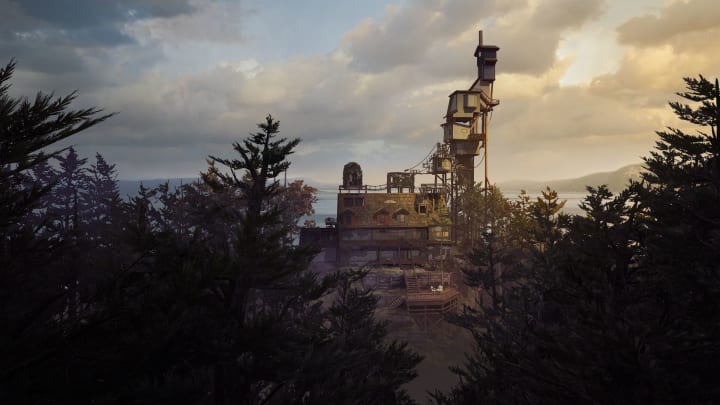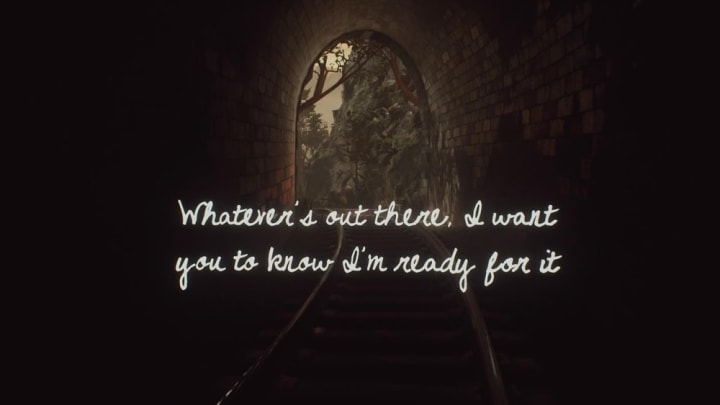This Game Made Me Cry
A Review of 'What Remains of Edith Finch'

What Remains of Edith Finch may safely be considered one of the current leading games of the walking-simulator genre. Admittedly, I have only played through it twice, but I will try to give my best review of this game.
A Well-Realized Artistic Vision

In What Remains of Edith Finch, you play as the last remaining survivor of the Finch family as she goes back to the long-abandoned Finch house. There are murmurs of the Finch family curse as each Finch family member has died in mysteriously coincidental manners. As Edith Finch finds hidden crawlspaces to navigate her way into the now-sealed rooms of the deceased Finch family members, the gamer shares flashbacks and memories of her each Finch family members life and tragic death. An apt analogy to describe playing through What Remains of Edith Finch is reading a book. Each memory of a Finch family member can be described to be a “chapter” of the book, the overall story that Edith is telling the viewer.
The artistic vision of What Remains of Edith Finch is not something to laugh at either. I was struck again and again by the episodic nature of each “chapter” that Edith explored. It almost felt like there was a different director and a different game for each memory that the gamer played. The style of gameplay and the style of art would change drastically from memory to memory, highlighting the difference in character and person of the deceased. This made the arguably simple game seem different and fresh even though the overall structure of the game was simple (find way into room -> flashback memory -> find next room).
An Eye for Design

What Remains of Edith Finch has, to begin with, great set design. The story begins with you playing as Edith Finch, approaching the long-abandoned Finch estate. You begin in a lush green forest, which, on its own, boasts its own set of good graphics. The graphics are not anything special or particularly hyper-realistic, say compared to that of the facial detail of Hellblade: Senua’s Sacrifice. However, once the player exits the forest, with the similar grandiose reveal of Hogwarts in Philosopher’s Stone, they get to see the Finch house for the first time. The architectural design of the building is fabulous (although most likely not structurally sound or plausible). It is a regular house with a garage with a teetering tower of rooms stacked on top of it and much more to be revealed in the basements below. The design of the house on the outside, however, is not what makes this game truly great.
The interior of the house is filled with details that make the house feel truly like… well, a house. As Edith Finch recalls her younger childhood years in the abandoned Finch house, the player follows Edith around as she narrates the small details from each now-deceased family member. Details such as going into the kitchen and finding cans and cans of salmon from when her brother worked at the cannery build the physical environment of the game as well as the narrative aspect.
Interior Design

This interior design also plays a great part in this game due to how it helps the game’s pacing. Unlike Campo Santo’s Firewatch (link to my review!), a similar walking-simulator game, Edith Finch suffers from no slow “travel” moments in the game. With its interior architectural design, the game is full of hidden trapdoors, crawlspaces, and stairs that bring Edith from memory to memory, chapter to chapter. And as the game is all contained within a single house, although a fairly large one, the time between travel is short, and often an interesting journey as each crawlspace and trapdoor is different from the last. It is also a bonus for more completionist explorers that passageways open shortcuts to previously accessed areas, so you don’t have to make long journeys retracing your steps. What I quite enjoyed about What Remains of Edith Finch is how aware it was of its strengths as a walking-simulator game. Walking-simulator games often are defined by their simple point and click or single button mechanics. However, What Remains of Edith Finch takes that simplicity and applies it differently to different situations, which keeps the single mechanic fresh. For instance, instead of clicking and dragging each door open using the same mechanic, sometimes you’d have to find a secret key to open the door, or sometimes the same click-drag mechanic would be used to turn pages of a book or open an envelope. Despite being a relatively long playthrough, the single click-drag mechanic never got old and felt like the game was over too soon.
The beauty of What Remains of Edith Finch is how it navigates the line between the gamer being in control and being a viewer. While you are almost always in control of where Edith walks and what Edith interacts with, the story is always the same. Unlike many narrative games where your choices influence the character’s story arc, What Remains of Edith Finch has a finite number of flashback/memories you can access, and the memories are always the same. Of course, as you are in control of Edith, theoretically you could skip accessing many memories and rush to the end of the game. But as the game is very similar to reading a book, skipping many “chapters” would make the entire story lose value (I must admit I accidentally did miss a chapter on my first playthrough). Although one may think the game seems too distanced at first, What Remains of Edith Finch is hardly a third-person voyeuristic adventure. As you play as Edith re-introducing herself to the home and remembering memories, you at the same time are introduced to these memories and stories. This simple but effective story-telling mechanic makes What Remains of Edith Finch a truly immersive game while allowing you to view the narrative from a distance.
Although this is arguably what gives What Remains of Edith Finch its strength, I found the simple gameplay mechanic to make the game too easy. While this may make the game more approachable to a wider audience, I found myself hoping that the click-drag mechanic would be utilized to solve harder puzzles, as these challenges are a staple of the narrative and walking-simulator genre.
While it is a fantastic game for its value, I found myself wondering if it would be better if the game were longer. The narrative, graphic, and gameplay quality were top-notch and I would have loved to see more stories and perhaps even longer stories. However, the longer game may end up negatively influencing the pacing of the game and perhaps leaving it short and sweet as it is was the best bet. The game itself doesn’t run perfectly smoothly and I did hit one or two bumps during the gameplay, but it wasn’t anything of high concern.
Rating: 9.5/10

Overall, I think What Remains of Edith Finch is a great game for gamers ranging from beginners to gaming enthusiasts. For some players, it may be too plot heavy, but unlike some more popular narrative games such as the Life is Strange franchise, the game itself is not very text heavy and provides an immersive experience.
About the Creator
Markus McWinston
Writer, gamer, enthusiast






Comments
There are no comments for this story
Be the first to respond and start the conversation.